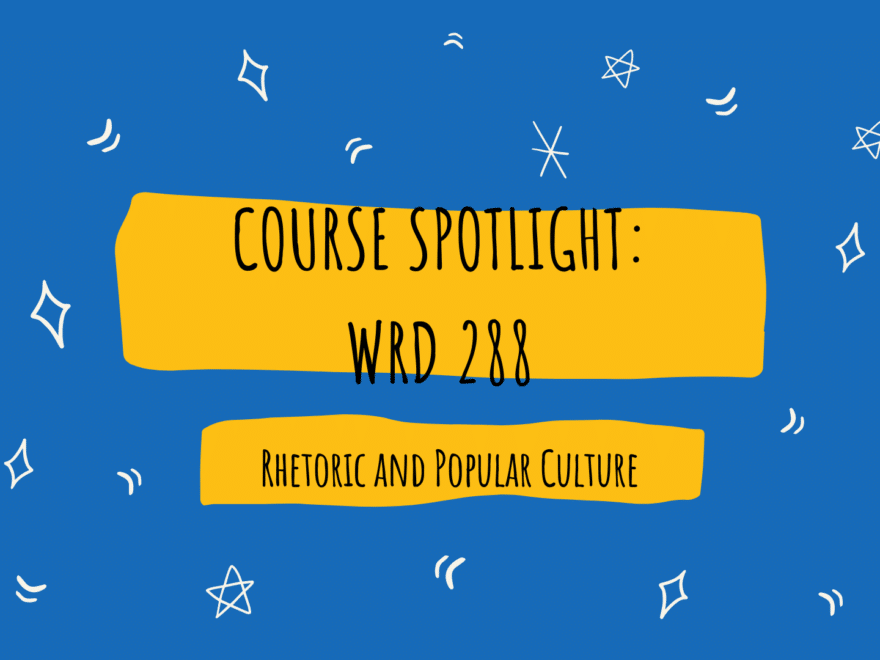Even though summer is closing in, registration for Autumn Quarter is still open, so we wanted to take the chance to highlight WRD 288 Rhetoric and Popular Culture taught by Justin Staley (with the help of Tim Elliot) Tuesday and Thursdays 11:20-12:50pm. We asked Justin to expand on the course and some of his favorite aspects.
1.Are there any artifacts or events in particular the class will be taking a look at? Could those change if something interesting happens over the summer?
What will be fun about this class will be the wide range of artifacts and events we’ll examine: music, art, books/comics, television shows, commercials, movies, restaurants, even memes. We aim to use enough works to appeal to a similarly wide range of students. We (Tim Elliot, with whom I developed the course, and myself) think that this could be one of the best, and most challenging parts of the course: how ephemeral pop culture can be. The course will absolutely need to be fluid in order to capture this and stay culturally relevant.
2. Do you think one aspect of pop culture affects rhetoric more than another?
There are some aspects of pop culture that might be more visible or prominent than others, but we’re more interested in how the rhetoric surrounding pop culture affects our perception of it, especially in determining “value.” The way critics write about things sort of melds reputation, prestige, time, and era along with hundreds of other factors and influences what we consider to be worthwhile art, and what we consider to be unworthy of that distinction. We want students to think deeply about how writers and speakers draw conclusions about art and how the cultural values embedded in creative works connect with (or challenge) prevalent social, political, economic, and racial ideas.
3. Any major projects you are looking to do?
Our biggest assignment in class will be for students to create a review in any style or genre they choose. They might choose to review a short comic, a podcast, an album, a film or television show, and much more. Students will have the option in this assignment to choose the format or modality of this review, for example, a purely textual review, a podcast, or a video, keeping in mind the benefits and drawbacks to working in different media.
4. What is your personal favorite reading/thing you will be teaching?
It’s tough to say at this point, but I think the thing I’m most excited to teach would be about music and music reviews. A lot of my freelance writing in the past revolved around interviewing artists and bands who were coming to town for shows, and it was some of my favorite writing I’ve ever done. We have such strong opinions about music: what’s considered “good” and what’s merely popular; what’s “art” and what’s bullshit. I suppose you could say the same thing about films, especially these days, but music is probably just a bit more personal to me.
Tim is most excited about teaching the comic books section, as well as the part of class where we focus on the controversial “End of Year” lists: what the critical consensus is (if there is one) around different artists, authors, and movies.
5. Have you taught this class before/do you hope to again? (If so, how have the topics changed?)
Autumn 22 will be my first time teaching the course (and the first time overall that the course will be taught). Tim Elliot and I will probably take turns teaching the course, building each time on what’s working most effectively, and what students respond most to. Each course will no doubt be different depending on who teaches it, as well as when we teach it, owing to how transitory pop culture can be, but we aim to keep the spirit of the course the same regardless of how it changes.
6. Anything students should know before coming to class in week 1?
We think it’s important to drop the pretense about what we think is “good” or “not good” in a wider cultural context. Throw your taste out the window.
